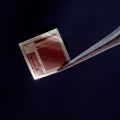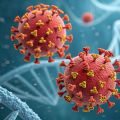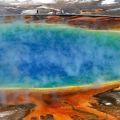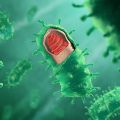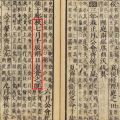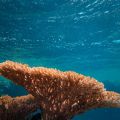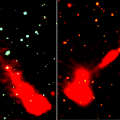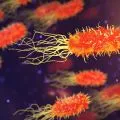Thysanoptera - Définition
Source: Wikipédia sous licence CC-BY-SA 3.0.
La liste des auteurs de cet article est disponible ici.
La liste des auteurs de cet article est disponible ici.
Conservation des spécimens
Les échantillons de Thrips se conservent dans de l’alcool à 10° additionné d’un mouillant durant 15 jours afin d’obtenir des insectes au corps distendu et aux pattes et ailes bien étalées. Les espèces bien mélanisées sont éclaircies à la potasse à 10% puis lavées avant déshydratation et montage.
Traits biologiques communs à l'ordre des thysanoptères
90 % des espèces connues sont phytophages
Classification des Tysanoptera
La détermination des Thysanoptères se fait à partir des femelles. Leur taille varie entre 1 et 2,5 mm et leur teinte varie du jaune clair au brun foncé selon les espèces. Le mâle est plus petit, plus fluet, souvent plus clair, dépourvu de tarière et les 9 et 10ème segments abdominaux portent souvent des ornementations. On utilise le plus fréquemment les caractères suivants :
- TEREBRANTS
- THRIPIDAE
- Panchaeothripinae
- Retithrips
- Panchaetothrips
- Hercinothrips
- Astrothrips
- Helionothrips
- Heliothrips
- Parthenothrips
- Selenothrips
- Thripinae
- Dendrothripini
- Dendrothrips
- Pseudodendrothrips
- Leucothrips
- Sericothripini
- Drepanothrips
- Scirtothrips
- Sericothrips
- Chirothripini
- Chirothrips
- Limothrips
- Thripini
- Anaphothrips
- Apterothrips
- Scolothrips
- Aptinothrips
- Belothrips
- Pseudanaphothrips
- Chaetanaphothrips
- Dicromothrips
- Oxythrips
- Tmetothrips
- Baliothrips
- Bolacothrips
- Ceratothrips
- Frankliniella
- Kakothrips
- Corynothrips
- Mycterothrips
- Odontothrips
- Megalurothrips
- Sorgothrips
- Plesiothrips
- Florithrips
- Platythrips
- Microcephalothrips
- Scolothrips
- Taeniothrips
- Thrips
- Fulmekiola
- Stendaetothrips
- Panchaeothripinae
- AEOLOTHRIPIDAE
-
- Franklinothrips
- Aeolothrips
- Melanthrips
- Rhipidothrips
- Ankothrips
-
- MEROTHRIPIDAE
-
- Merothrips
-
- HETEROTHRIPIDAE
-
- Heterothrips
-
- THRIPIDAE
- TUBULIFERES
- PHLAEOTHRIPIDAE
-
- Bolothrips
- Cryptothrips
- Megalothrips
- Megathrips
- Raphidothrips
- Abiastothrips
- Acantothrips
- Cephalothrips
- Gynaikothrips
- Haplothrips
- Hoplandrothrips
- Hoplothrips
- Liothrips
- Phlaeothrips
- Poecilothrips
-
- PHLAEOTHRIPIDAE





